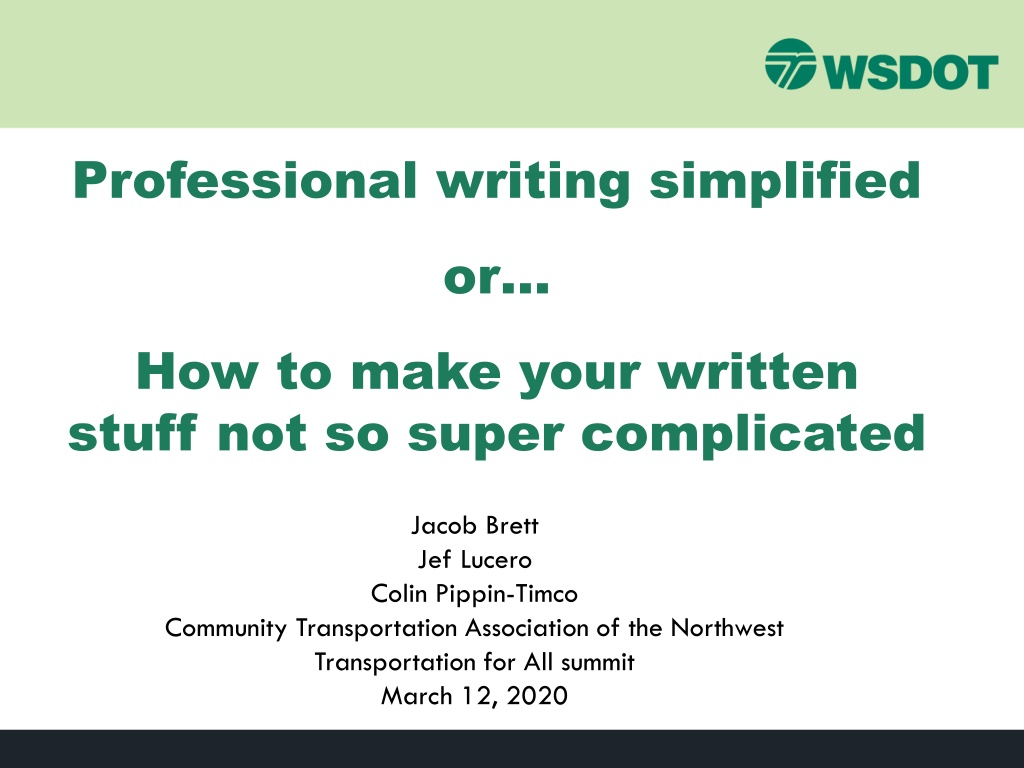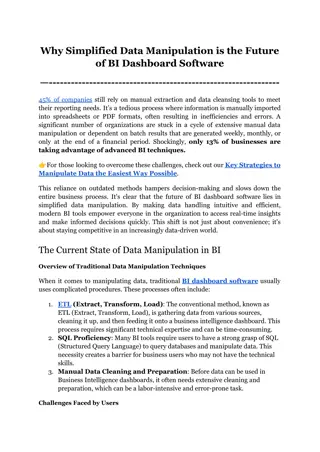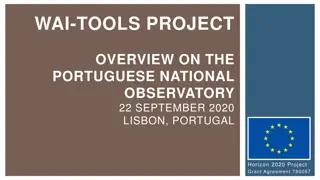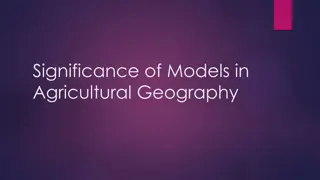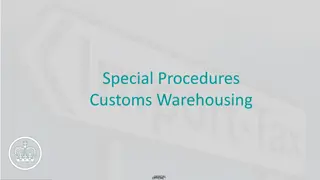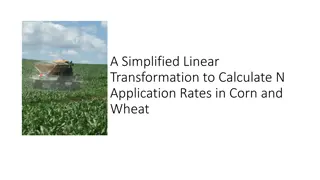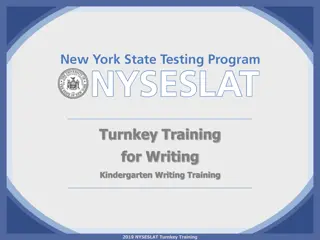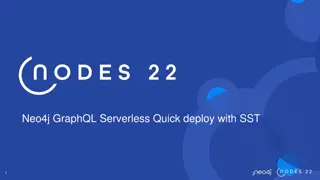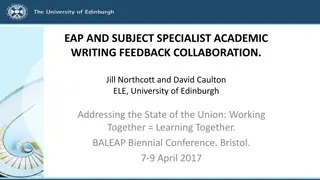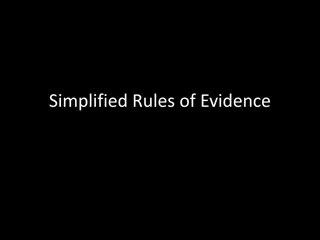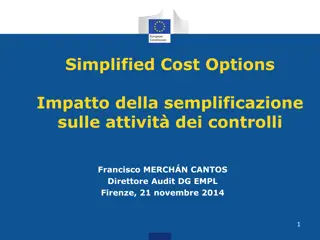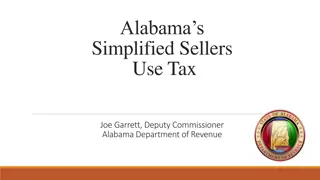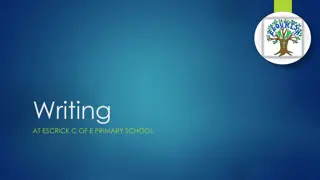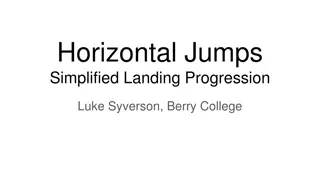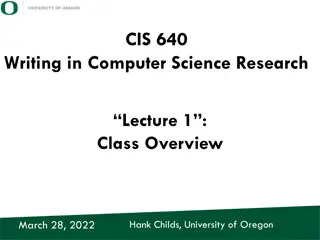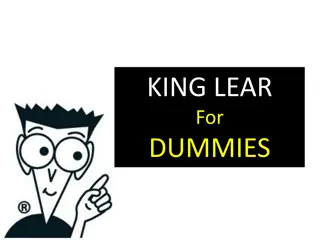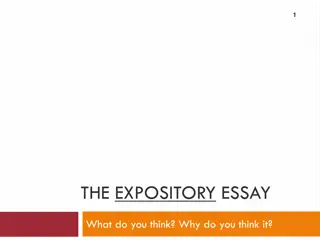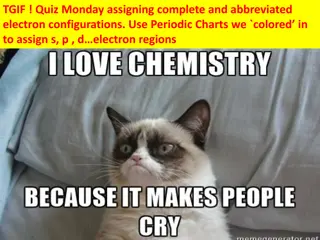Professional writing simplified
Writing reports and emails for diverse audiences can be challenging. Learn how to simplify your writing for better readability. Discover tips to avoid big words and connect with your readers effectively.
Download Presentation

Please find below an Image/Link to download the presentation.
The content on the website is provided AS IS for your information and personal use only. It may not be sold, licensed, or shared on other websites without obtaining consent from the author.If you encounter any issues during the download, it is possible that the publisher has removed the file from their server.
You are allowed to download the files provided on this website for personal or commercial use, subject to the condition that they are used lawfully. All files are the property of their respective owners.
The content on the website is provided AS IS for your information and personal use only. It may not be sold, licensed, or shared on other websites without obtaining consent from the author.
E N D
Presentation Transcript
Professional writing simplified or How to make your written stuff not so super complicated Jacob Brett Jef Lucero Colin Pippin-Timco Community Transportation Association of the Northwest Transportation for All summit March 12, 2020
The problem We re often asked to write reports, emails, and other correspondence that people from many walks of life will read. It can be daunting to write in a way that s professional yet accessible to everyone. 2
The solution 1. We re going to give a presentation on a few things to think about as you craft and edit correspondence. 2. After the presentation, we ll engage you in an editing exercise to flex the skills you just learned. 3. Finally, we ll send you packing with a cheat sheet full of cool writing tips. 3
Tip #1: Drop the big words What is a big word? Three or more syllables = big word. 4
Why should I avoid big words? They make your writing harder to read. They distract from your point. They waste your readers time. They alienate your readers ( Maybe I m not smart enough to read this ). You don t get paid by the character. You want people to read what you write. 5
The fix 1. Use the words your readers use. English language has more than a million words. Most of us only recognize 30,000-50,000 words (3-5%). The average American only uses 3,000-5,000 words regularly at work (0.3-0.5%). 2. Use big words super sparingly. Proper nouns (Department of Transportation). Short word combos (overpass, paperwork, spreadsheet). When big words are the most efficient way to express your point (environment, pollution, transportation). 6
A formula for success 10% big words | 90% small words 7
Before and after Before By utilizing this action plan, our division can disseminate information about regulations and programs that generate positive outcomes in communities throughout the state and enhance the accessibility of community resources through multimodal transportation alternatives to single occupancy vehicles. 8
After If we follow this action plan, our division can spread information about laws and programs that make it easier for people to get around their communities without driving a car. 9
Tip #2: Unpack abbreviations and acronyms What is an abbreviation? A shortened form of a written word or phrase. Abbreviations often have inconsistent and arbitrary styling, and many, many variations. What is an acronym? An abbreviation formed from the initial letters of other words and pronounced as a word.
Why should I avoid abbreviations and acronyms? 1. The same abbreviation and acronym can mean different things to different industries. It can even have multiple meanings within an organization! 2. Abbreviations and acronyms don t substantially decrease the length of your correspondence. Your awesome writing style does. 3. Abbreviations and acronyms are obscenely bureaucratic. 4. Abbreviations and acronyms create layers and layers of confusion in your writing. 11
The fix 1. Try for no more than three abbreviations and acronyms per document (including your organization s name! yeah, I m talkin to you WSDOT CTANW ). 2. Unpack the acronym or abbreviation and ask, Is this just another way for me to hide big words? 12
Before and after Before SSO is responsible for ensuring that RTAs implement RFGPTS safety programs in Washington state. The program also ensures that all hazards are being addressed through mitigation or elimination. 13
After The State Safety Oversight Program helps rail transit agencies in Washington implement and comply with safety requirements. The program ensures that agencies track, manage and eliminate hazards in their systems. 14
A little video www.youtube.com/watch?v=KEU-t-ANpdY 15
Tip #3: Per arcane rule of the writerly bureaucrats before you, eschew and eliminate any and all governmentese, transpospeak, legalese, medicode, etc. etc. etc.
What is governmentese? Words and phrases that only exist in your institution, agency, and industry. Long strings of technical words, buzzwords, legal codes, and other jargon. Assumptions that everyone knows your department and org-chart (totally typical on government websites).
Why should I avoid governmentese? 1. It makes it hard for people to understand your writing (even in your organization). 2. It alienates your reader ( maybe I m not smart enough to read this? ). 3. It often adds to your word count without adding any value to your writing. 4. Nobody wants to hire a lawyer to figure out what you re talking about.
Examples of governmentese Buzzwords that don t mean anything streamline | siloed | framework seamless integration | operationalize Words that really mean something else facilitate: to make easy, help tackling: using your body to take someone else down (avoid football terms) driving: operating a vehicle impact: the action of one object coming forcibly into contact with another Fancy words & phrases that normal people don t use regularly allocation | jurisdiction | pursuant to | hereto | as per
The fix 1. Get out the dictionary and check that the word you want to use really means what you think it means. 2. Get out the thesaurus and aim for the simple words.
Before and after Before As per the regulation in RCW 12.34, the framework for developing system performance evaluation methodologies must be consistent with the Bureaucratic Efficiency Initiative. Pursuant to these goals, the Capital Improvements team must seamlessly integrate evaluation metrics into our technical specification reports. Furthermore, the reporting party shall route the performance standards to the designated jurisdiction for processing, and must ultimately facilitate the subsequent steps to file the report with the appropriate authority.
After We must use the metrics from the Bureaucratic Efficiency Initiative to measure our success (RCW 12.34). The Capital Improvements team must include these metrics in all reports. After they file reports, the team must send the metrics to the city or county, and help them file the report with the correct office.
Tip #3: Quit being so passive! What is passive voice? Passive voice produces a sentence where the subject receives an action: The road was crossed by the chicken. Active voice produces a sentence where the subject performs an action: The chicken crossed the road.
Why should I avoid passive voice? Passive and indirect language removes the humanity from your writing, while also sapping its strength. Your audience may start to lose interest. Try an active and direct voice to wash away the stuffiness. It s also super-confusing. Who s doing what? How was something done? Who knows?!
The fix Ask yourself: Is it easy to see who s doing what to whom in my writing.
Before and after Before Pursuant to RCW 86.75.309, individuals named Jenny are encouraged to maintain their existing telephone numbers.
After If your name is Jenny, Tommy Tutone encourages you to not change your telephone number (RCW 86.75.309).
Tip #4: Use your MS Word editing suggestions Machines are here to swallow our souls and make sure our writing is good. Turn your MS Word editing suggestions up to 11. 28
Small group activity Each table has sheets of paper with paragraphs from one of our websites. 1. Grab a sheet and edit the paragraphs for readability on your own for 4 minutes. 2. Grab a new sheet and edit the paragraphs with a partner from your table for 6 minutes. Appoint a scribe! 3. Grab a new sheet and edit the paragraphs as a table group for 10 minutes. Appoint a scribe! 4. Present your amazingly edited paragraphs. 34
Contact Jacob Brett 206-464-1291 jacob.brett@wsdot.wa.gov Jef Lucero 360-705-7846 jef.lucero@wsdot.wa.gov Colin Pippin-Timco 360-705-7902 colin.pippin@wsdot.wa.gov 35
